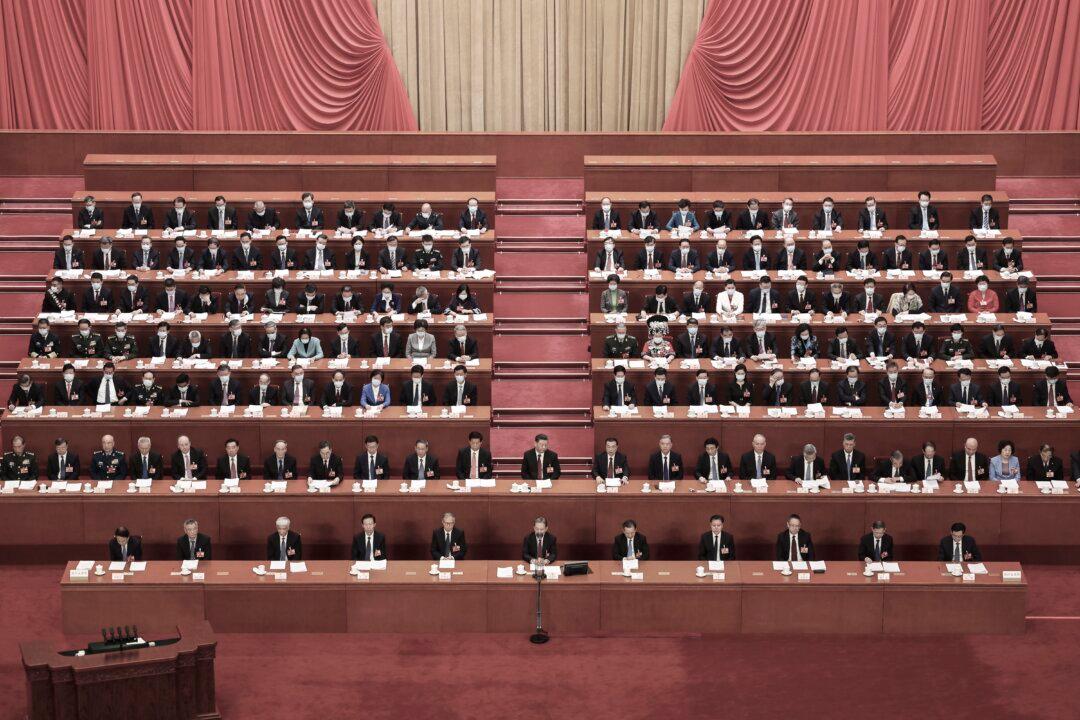As China reels from a major outbreak of COVID-19 following the lifting of zero-COVID policies in early December, the growing list of obituaries reads like a who’s who of Chinese scientists.
Fifteen academicians from the Chinese Academy of Engineering (CAE) passed away from Dec. 15 to 28, most of them members of the CCP. From Dec. 21 to 25, six academicians from the Chinese Academy of Sciences (CAS) passed away. In addition, on Dec. 29, the Chinese news website Sina reported that China’s “missile expert” Li Junlong had died of COVID-19, at the age of 58. Li was the chief technical officer of a missile model at China’s Second Academy of Aerospace Science.
As freelance writer Zhuge Mingyang told The Epoch Times on Dec. 29, the life of a scientist in China is subject to the whims of the Chinese Communist Party (CCP). Scientists are alternately honored and reviled, and ultimately, their value is based on their perceived usefulness to the CCP.
Many of China’s senior scientists were persecuted decades ago during the Cultural Revolution. Despite this, they were later forced to serve the party, and some of them were even brainwashed into doing propaganda for the CCP.
According to Zhuge, “Most of the elderly scientists in China have been persecuted by the CCP.” They are either forced to compromise their principles, he said, “or some of them have accepted the CCP’s brainwashing, voluntarily providing service to the CCP and helping to improve the CCP’s image.”
Zhang Youshang: Cambridge Educated Biologist
Zhang Youshang, former vice director of the Shanghai Institute of Biochemistry and former director of the State Laboratory of Molecular Biology at the CAS, died on Dec. 23, 2022, according to an obituary released by the CAS Center of Excellence in Molecular Cell Science. He was 97. His obituary portrays Zhang as an outstanding member of the CCP.Zhang’s life exemplifies how the CCP treats scientists. In 1964, Zhang was chosen by Chinese authorities to study molecular biology at Cambridge University in the United Kingdom. In order to start working on X-ray crystallography after his return to China, Zhang spent two to three months collecting diffraction images of the outer shell crystals of the tobacco mosaic virus protein and obtained new structural information from them. This study, done with three British scientists including Aaron Klug, was published in Nature magazine in 1966.
However, Zhang returned to China just prior to the start of the violent Cultural Revolution. He was persecuted and unable to return to his research until 1970. In September 1972, he was sent to the labor camps for five months, making it impossible to continue his research on muscle and viral proteins.
Zhao Yijun: Brilliant Physicist
A distinguished physicist, Zhao Yijun also lived a life of tragedy under the CCP. On Dec. 22, the National University of Defense Technology (NUDT) released an obituary saying that Zhao Yijun, one of the pioneers and founders of China’s high-energy laser technology and an academician of the Chinese Academy of Engineering, had died in Beijing on Dec. 21 at the age of 92.In the early 1960s, Zhao took part in the theoretical studies of nuclear explosion thermoradiation phenomenon and developed three kinds of test equipment. He participated in the first and second atomic explosion tests in China.
In the early 1960s, the CCP worked to develop atomic bombs and conduct testing. By the end of 1968, Zhao’s work on the analysis of optical radiation tests of nuclear explosions had reached a new stage, and he began to turn to basic theoretical research on fireball physics.
However, despite working diligently for China’s military research, Zhao was branded as a foreign agent by the CCP and imprisoned during the Cultural Revolution.
He was labeled as a “foreign agent” and was subjected to extensive scrutiny. He was placed in a cell of less than 10 square meters (108 sq. ft.) with a covered window. There was no table or bed in the cell, only a mattress on the floor, and his food was limited to two pieces of bread and a glass of water each day. Zhao was subjected to endless interrogations, starvation, humiliation, and physical torture.
Zhang Jinzhe: Pediatric Surgery Pioneer
Zhang Jinzhe, an academician of the Chinese Academy of Engineering, was a professor at the Chinese National Children’s Medical Center and Beijing Children’s Hospital. He died Dec. 24 at the age of 102. Sina news extolled him as the founder of pediatric surgery in China and an outstanding member of the communist party.CCP’s Campaign to Draw Intellectuals Back to China
Prior to persecuting its scientists, the CCP diligently lured them back from abroad to work for the CCP. This effort began even before the CCP took control of China in 1949.In 1946, the CCP secretly selected some underground party members to study abroad through the official channels of the Kuomintang, which ruled China at the time. Famous underground CCP members who studied abroad included the chemist Hou Xianglin and electronics pioneer Luo Peilin.
The drawback to the post-World War II wave of Chinese scholars who studied abroad was clear. They might, or might not return to China after their studies. The CCP thus embarked on its effort to draw Chinese talent back to China.
This effort was very successful, as illustrated by the case of Luo Peilin and aeronautical engineer Qian Xuesen.
Luo Peilin joined the CCP in 1938. In the spring of 1948, at the age of 35, Luo Peilin went to the California Institute of Technology (Caltech) to study for his doctorate. The CCP had assigned him a special mission: to encourage outstanding overseas talents to return to China to work for the party.
Luo Peilin had become a close friend of scientist Qian Xuesen when Qian was studying in Shanghai in the early 1930s. Qian Xuesen now became the CCP’s main target.
In the summer of 1949, at the age of 38, Qian Xuesen moved from MIT to California to become director of the Guggenheim Aeronautical Laboratory at Caltech, where he led research on American space rockets.
While Qian was at Caltech, Luo spent almost every Saturday at Qian’s house. His friendship with the brilliant aeronautical engineer would lead to what is widely regarded as a tragedy for American scientific efforts.
Despite Luo’s efforts, Qian was not enthusiastic about returning to China. In fact, after the CCP took over mainland China in October 1949, Qian filed an application for naturalization with the U.S. Immigration Service.
Trapped by the CCP’s Scheme
In February 1956, Chinese leader Zhou Enlai set a goal of returning at least 1,000 international students to help with the development of China under the CCP. The focus of the initiative was on students in the United States. According to the CCP’s statistics, from August 1949 to November 1955, as many as 1,536 senior intellectuals returned from Western countries. That number included 1,041 from the United States.Overseas Chinese intellectuals returned to China with good intentions, but the reality they encountered was in stark contrast to their expectations.
The Cultural Revolution from 1966 to 1976 was an era of carnage for China. Communist leader Mao Zedong’s attempt to take China back to “pure” communism led to the persecution and execution of any who were perceived as a threat to the party.
Scientists were just the tip of the iceberg, as academia and religion were heavily targeted by the revolution, resulting in millions of deaths. Countless teachers and professors across China were attacked.
Common methods of persecution included public humiliation in front of crowds as well as public torture. Many scientists and intellectuals were killed or committed suicide.




